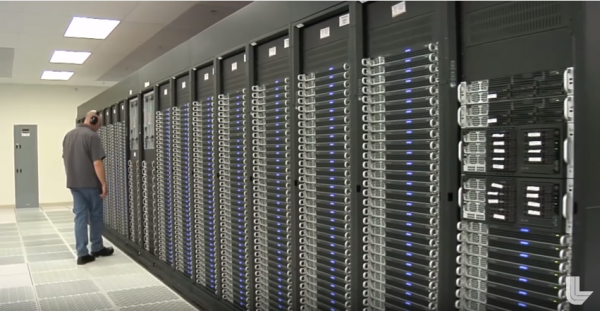By Prei Dy, | May 09, 2017

The next generation of high performance supercomputers is not only driving new technologies but also stirring competition in the international community. (YouTube)
With the rise of workloads like data analytics and machine learning, the next generation of high-performance supercomputers is driving new technologies and international competition.
The Chinese government has been ramping up on developing the world's first exascale computer, which is 200 times more powerful than the current world champion. One of the prototypes under development called the Tianhe-3 is expected to be completed within the year.
Like Us on Facebook
The United States, on the other hand, is planning to unveil its first exascale-capable systems in 2021 under its year-old Exascale Computing Project (ECP). The follow-up systems are set to be delivered in 2022 and deployed in 2023. The ECP has collaborated with several high-profile technology companies such as Intel, IBM, and Nvidia to develop the exascale systems, and other tech giants are slated to join the effort shortly, according to eWeek.
Governments and investors from other nations such as Japan and the European Union are also ratcheting their exascale efforts. For instance, Japan's Fujitsu is also developing an exascale system called the Post-K supercomputer that will be based on the ARM architecture instead of its SPARC64 fx processors.
In April, European Union countries including France, Germany, Luxembourg, the Netherlands, Portugal, and Spain also announced plans to create the EuroHPC, an initiative that aims to develop the next-generation supercomputers.
While it is still unclear how these exascale systems look like or what they plan to implement, they have committed to address and cater to the increasing changes in high-performance computing and enterprise computing.
Exascale computing is capable of making a quintillion (1 followed by 18 zeros) calculations per second. It will surpass the Sunway TaihuLight's supercomputer, currently the world's fastest, with only a capability of making 125 quadrillions (1 followed by 15 zeros) calculations per second. Furthermore, exascale is dubbed as a significant milestone in computer engineering as its order of processing power is believed to be comparable with the human brain at the neural level.
Aside from that, exascale systems will allow more detailed and complex simulations of almost everything, including oil and gas exploration, climate change, drug development, genomics research, Internet of Things development, and advances in the fields of machine learning and artificial intelligence.
Hence, the drive to exascale is fuelling high-stakes of international competition, especially in China and the US, as the country that can lead the exascale race will gain an advantage in all aspects ranging from military and scientific research and development to business development.
While ECP claimed that the US maintains its lead in computing technology, the position is not assured going forward as China continues to aggressively develop its exascale capabilities.
-
Use of Coronavirus Pandemic Drones Raises Privacy Concerns: Drones Spread Fear, Local Officials Say

-
Coronavirus Hampers The Delivery Of Lockheed Martin F-35 Stealth Fighters For 2020

-
Instagram Speeds Up Plans to Add Account Memorialization Feature Due to COVID-19 Deaths

-
NASA: Perseverance Plans to Bring 'Mars Rock' to Earth in 2031

-
600 Dead And 3,000 In The Hospital as Iranians Believed Drinking High-Concentrations of Alcohol Can Cure The Coronavirus

-
600 Dead And 3,000 In The Hospital as Iranians Believed Drinking High-Concentrations of Alcohol Can Cure The Coronavirus

-
COVID-19: Doctors, Nurses Use Virtual Reality to Learn New Skills in Treating Coronavirus Patients












